The Doors: a band synonymous with the 1960s cultural revolution. Their echoes resonate in the corridors of rock music history. Their poetic lyrics and bold sounds created a niche. It remains unparalleled. They started in the Los Angeles music scene. Became iconic. Transcend generations. The Doors’ story: music chronicle, enduring influence, artistic audacity. As we explore their journey, we uncover how a band transformed into a legend. Their impact on music and culture is unforgettable.
The Birth of a Rock Legend
In 1965, the music world witnessed the birth of a legend in the heart of Venice, California. the Doors: inspired by Aldous Huxley’s “The Doors of Perception”. Jim Morrison and Ray Manzarek met at UCLA School of Theater, Film, and Television. Morrison’s poetic talent impressed Manzarek. He invited him into his group, Rick and the Ravens. This marked the beginning of a band that would shape rock music’s sound.
The Doors’ formation was solidified. Guitarist Robby Krieger and drummer John Densmore joined. They completed a quartet. Soon, they became an emblem of the 1960s rock scene. They weren’t just musicians. They were pioneers. Venturing beyond traditional soundscapes. Blending rock with other genres. This group was remarkable for its musical versatility. Morrison’s distinctive voice and stage presence were standout elements. They played a significant role in their controversial yet influential status.
In their early days, the Los Angeles music scene was their home. Deeply connected with the cultural milieu of the 1960s. The Doors were more than a band; they were music pioneers, setting the stage for a new era in rock history. From obscurity to fame they went. Their hit single “Light My Fire” sealed the deal. A testament to their unique vision and musical prowess.
Explore the origins and early influences of The Doors. Delve into the creative spark that propelled them from a local band to worldwide fame. They forever altered the rock music landscape. Their story is about the power of artistic expression to resonate across generations. They stand as a beacon of innovation and cultural revolution.
Key Members and Their Roles
Four unique talents composed The Doors, an emblematic rock band of the 1960s. Jim Morrison: charismatic frontman, dark-edged baritone, pseudo-poetic lyrics. Set the band apart. Partnership with Ray Manzarek: keyboardist, classical musician. Foundation of band’s formation, creative direction.
Robby Krieger, the guitarist, and John Densmore, the drummer, added to this dynamic. Blues and jazz backgrounds, plus improvisation skills, molded the band’s innovative sound. Classical music, blues, and jazz fused to create The Doors’ unique style.
Musical Style and Influences
The Doors’ music was a tapestry of various genres, ranging from Chicago blues to German cabaret. Their sound was characterized by its ambitious scope and the daring to blend different musical styles. Morrison’s vision and lyrical prowess often led the band to explore themes that were both controversial and theatrically potent, as exemplified in songs like “The End”. This blend of musical and lyrical boldness positioned them as one of rock’s most potent and theatrical acts, pushing the boundaries of rock composition and performance.
Their music was not just a reflection of their diverse influences but also a commentary on the cultural and social milieu of their time. The Doors’ ability to integrate these varied styles into their music was not only innovative but also a testament to their artistic depth and versatility. The way they wove together different musical traditions contributed significantly to their lasting impact on rock music and culture.
The Doors’ Rise to Fame
Breakthrough Albums and Hit Songs
The Doors surged to fame with their 1967 self-titled debut album, which charted at No. 2 on the US Billboard 200 and featured their most successful single, “Light My Fire”. This album received multiple platinum certifications. Their second album, “Strange Days”, though not as successful as the first, reached No. 3 on the Billboard 200 and was certified platinum. The 1968 album “Waiting for the Sun” topped charts in the US and France, featuring the hit “Hello, I Love You” and marked their first chart appearance in the UK.
Their fourth album, “The Soft Parade”, introduced strings and brass, facing criticism but still achieving Top 10 status and producing the hit “Touch Me”. “Morrison Hotel” followed, returning to blues roots and achieving critical and commercial success. Their final album with Morrison, “L.A. Woman”, was praised for its heavy blues influence, producing notable singles like “Love Her Madly” and “Riders on the Storm”.
Iconic Performances and Tours
The Doors’ live performances were characterized by their enigmatic stage presence, making their concerts memorable experiences. Their tours and live shows played a significant role in enhancing their popularity and establishing a dedicated fanbase.
The Doors in the Media: Films and Documentaries
The Doors’ influence extended into films and documentaries, notably with “The End” featuring in the Vietnam War film “Apocalypse Now” and the release of “Greatest Hits”. These works introduced the band to new audiences. The 1991 feature film “The Doors”, directed by Oliver Stone and the 2009 documentary “When You’re Strange”, narrated by Johnny Depp, further expanded their popularity, showcasing their enduring appeal in popular culture.
The Impact of Jim Morrison
Morrison’s Artistic Genius and Lyrical Depth
Jim Morrison, the enigmatic frontman of The Doors, was not just a singer; he was a poet whose words left an indelible mark on rock music. Born in 1943, Morrison’s upbringing in a military family led him to develop a love for reading at an early age, gravitating towards mythology, the occult, and later, the works of Beat Generation writers. His favorite book, “The Golden Bough” by James Frazer, significantly influenced his songwriting, inspiring songs like “The End” and “When the Music’s Over”.
Morrison’s literary prowess was evident in his unique writing style. He drew inspiration from the French poets Rimbaud and Baudelaire, as well as the German philosopher Nietzsche, reflecting a blend of surrealism, existentialism, and a deep exploration of death and nothingness in his lyrics. This literary background contributed to Morrison’s ability to create songs that were both abstract and deeply resonant, such as “People Are Strange,” which echoes themes of loneliness and alienation found in Albert Camus’s works.
Morrison, often regarded as one of the most influential frontmen in rock history, was known for his spoken word poetry, improvisation during live performances, and a voice that embodied the counterculture of the 1960s. Despite not playing instruments in the traditional sense, Morrison’s vocal melodies and presence were central to The Doors’ sound. His influence extends beyond postmodern or avant-garde theory, earning him recognition as a significant 20th-century artist.
His impact on The Doors was profound. Morrison’s interest in jazz and blues shaped the band’s musical direction, with influences ranging from Muddy Waters and Howlin’ Wolf in blues to the likes of John Coltrane in jazz. His admiration for Frank Sinatra also played a role in his vocal style, as did the poetic and sophisticated arrangements of jazz singer Peggy Lee. These diverse influences, combined with Morrison’s poetic lyrics, were instrumental in defining The Doors’ unique psychedelic rock style.
Morrison’s legacy continues to inspire a wide range of artists, from Patti Smith to Iggy Pop, and bands like Joy Division and Stone Temple Pilots, highlighting his enduring influence on the rock music landscape and beyond.
The Impact of Jim Morrison
Controversies and Mystique
Jim Morrison, known for pushing boundaries, became the ultimate rockstar rebel with The Doors. His controversial behavior, especially highlighted during the infamous Miami incident on March 1, 1969, cemented his reputation as a provocateur. Morrison’s onstage antics, challenging societal norms through lyrics about sex, drugs, and death, fueled much speculation and debate. The Miami performance, where he allegedly provoked the crowd and faced accusations of indecent exposure, led to his arrest, trial, and subsequent conviction. This controversy sparked worldwide debates on artistic expression and freedom.
Morrison’s Untimely Death and Its Effect on the Band
Morrison’s death in 1971, at just 27, was shrouded in mystery and conspiracy theories. His passing marked a significant turning point for The Doors, symbolizing the end of an era. The legal battles and controversies surrounding Morrison impacted the band profoundly, leading to cancellations and bans. Following his arrest, Morrison’s behavior became more erratic, affecting the band’s dynamics and public image. Despite the controversies, Morrison’s influence and music continue to inspire and be celebrated in rock music lore, a testament to his lasting impact.
Philosophy and Themes in The Doors’ Music
Exploring Existential and Psychedelic Themes
The Doors, emerging from the 1960s Los Angeles music scene, were at the heart of the cultural revolution, leaving a significant mark on rock and roll. Their music, a unique blend of rock, blues, and psychedelia, was heavily influenced by a diverse range of genres, including the works of blues and rock pioneers, as well as elements of jazz, classical music, and poetry. This eclectic mix contributed to their signature sound, setting them apart from their contemporaries.
At the core of The Doors’ music was a fusion of rock, blues, and psychedelia, characterized by hypnotic rhythms, haunting melodies, and Jim Morrison’s introspective lyrics. Songs like “The End” and “When the Music’s Over” are prime examples of the band’s ability to create sonic journeys, immersing listeners in a psychedelic experience. These tracks, along with others from their albums such as their self-titled debut, “Strange Days,” “Waiting for the Sun,” and “The Soft Parade,” showcase the band’s evolution in musical experimentation.
The Doors were also pioneers in studio experimentation, pushing the boundaries of what could be achieved in a recording studio. They incorporated unconventional instruments like the marxophone and harpsichord and employed innovative recording techniques to create unique sonic textures. This commitment to innovation allowed them to create music that was both ahead of its time and timeless, influencing not just their contemporaries but also future generations of musicians and fans.
Rebellion and Social Commentary in The Doors’ Music
The Doors and the Counterculture Movement
The Doors were not just a band; they were a symbol of the counterculture movement of the 1960s. Unlike the typical “hippie” culture associated with San Francisco, The Doors presented a unique, unorthodox brand of countercultural resistance. Their music and lyrics often touched on themes like “sex as a weapon,” challenging societal norms and rejecting the overt elements of hippie culture, such as Woodstock. The band’s popularity during the late sixties highlights the broad appeal of their specific countercultural stance.
Linking Music to Social Events and Attitudes
Songs like “Five to One” exemplify The Doors’ approach to incorporating social and political themes in their music. The lyrics are rich with double meanings, intertwining themes of sex, death, politics, and drugs. This song, along with others, presents a complex interpretation of the sixties, reflecting the band’s views on social issues and their unapologetic stance on controversial topics.
The Doors’ Philosophical Influences
The Doors, particularly Jim Morrison, brought diverse social and political philosophies to their music. These ideologies fit within the broader cultural trends of the early and mid-sixties. Morrison’s unique artistic perspective aligned with the resistance movement that emerged in the summer of 1967, influencing how listeners perceived and categorized The Doors’ music. The band sought to express a more intellectual appeal, distancing themselves from San Francisco’s psychedelic scene.
Theatrical Performances and Political Messages
In their performances, The Doors were influenced by Antonin Artaud’s “theater of cruelty,” which sought to disrupt the viewer’s sense of reality through intense emotional and physical scenes. This approach linked their music and performances to politics, aligning with the Dionysian spirit of freedom and rebellion that resonated within the emerging counterculture.
The Doors’ Evolution and Impact on Social Issues
The Doors’ music and lyrics called upon their underground ideological roots to explore various countercultural themes. Over time, the band’s viewpoints on key issues of the sixties evolved, as they intentionally emphasized differences from their San Francisco counterparts. Their music and performances addressed drugs, sex, politics, and other aspects of sixties culture, contributing to their image as a band that not only embraced but also shaped countercultural ideologies.
Confrontation with Authority
Authority figures often linked The Doors with the New Morality, perceived as potentially dangerous. At a concert in New Haven, Morrison’s interaction with the police, which he narrated to the audience, led to his arrest and further fueled the controversy surrounding the band. This incident was seen as an example of police brutality and contributed to The Doors’ reputation as a band willing to confront and challenge authority
Mysticism and the Quest for Higher Consciousness in The Doors’ Music
Exploring the Mystical and Spiritual Aspects
Jim Morrison and The Doors delved deeply into mysticism and spirituality, elements that significantly shaped their music and lyrics. Morrison, known for his poetic approach, often explored themes of life, death, rebirth, and the search for meaning. His fascination with these subjects was a reflection of his deeply held personal beliefs, profoundly incorporated into his music.
One of the key mystical themes in Morrison’s lyrics was the concept of the “Lizard King,” a shamanic figure in Native American mythology. This imagery, reflecting Morrison’s interest in shamanism, suggests a desire to connect with a deeper spiritual reality. He used this metaphor to convey his vision and communicate with the spirit world.
Another recurring theme was the “celestial ship,” symbolizing a mystical journey of the soul through life and death. This idea, evident in songs like “Light My Fire” and “The Soft Parade,” points to Morrison’s interest in the afterlife and the transcendent nature of the human soul.
Morrison’s lyrics often contained a sense of mystery and ambiguity, inviting listeners to explore their own spiritual and existential questions. Songs like “The End” feature haunting, enigmatic lyrics that evoke the deepest fears and desires of the human psyche.
The 1960s cultural context, marked by counterculture movements and alternative forms of spirituality like Eastern mysticism and psychedelic exploration, influenced Morrison. However, his lyrics reflect not just these broader cultural currents but also his own deeply held beliefs and personal exploration of life’s mysteries.
Despite his untimely death, Morrison’s legacy as a mystical poet and visionary endures. His artistic expression, characterized by poetic beauty, enigmatic imagery, and a deep sense of spiritual longing, continues to inspire and resonate with audiences, marking him as one of the most profound visionaries of the 20th century.
Morrison’s shamanic vision was a major influence on his artistic expression, leading him to view himself as a modern-day shaman. Through his music and poetry, he sought to tap into a deeper spiritual dimension and share this vision with his audience, often employing shamanic imagery to connect with the natural world and the elements.
The Doors’ Songs and Albums: A Closer Look
Analyzing Key Tracks and Their Messages
The Doors, a band that revolutionized rock music, are known for their distinctive sound and poetic lyrics. Their songs often delve into complex themes, blending rock with a variety of other musical genres. Let’s take a closer look at some iconic tracks to uncover the storytelling and artistic expression in their music.
‘Light My Fire’ is perhaps one of the most well-known tracks by The Doors. Its mixture of psychedelic rock and jazz rhythms creates a hypnotic atmosphere. The song’s lyrics invite listeners into a world of passionate love and desire, showcasing the band’s flair for blending the romantic with the spiritual.
‘Break on Through (To the Other Side)’ is another hallmark of The Doors’ discography. This song is a powerful expression of pushing boundaries and exploring new realms of consciousness. Its energetic tempo and Morrison’s intense vocal delivery embody the spirit of the 60s counterculture movement.
‘Riders on the Storm’ adds a layer of mystique and introspection to their work. The song’s haunting melody and the sound of rain in the background provide a perfect setting for its introspective lyrics, which explore the human psyche and the existential journey of life.
Check out: 19 Best Songs by The Doors
Albums that Defined an Era
The Doors’ discography is not just a collection of songs but a reflection of a transformative era in music and culture. Their albums stand as monuments of musical experimentation and studio innovation. Let’s explore some of their most influential albums and how they captured the essence of their time.
Click here to read: Best Doors Albums
Evolution of Musical Styles in The Doors’ Discography
The Doors’ musical journey is marked by constant evolution and experimentation. Their discography reflects a band unafraid to explore and redefine their sound. Let’s trace how their music transformed over the years, revealing their growth and experimentation with various genres.
Early Experimentation: In their self-titled debut album, ‘The Doors’ (1967), the band’s sound was rooted in psychedelic rock, blended with blues and a hint of classic rock. This album set the tone for their early experimental phase, characterized by extended solos and Morrison’s poetic lyrics.
Psychedelic and Progressive Phase: With ‘Strange Days’ (1967) and ‘Waiting for the Sun’ (1968), The Doors delved deeper into psychedelic rock. These albums showcased a more progressive style, with complex compositions and a broader use of studio effects. ‘Strange Days,’ in particular, featured an avant-garde approach with tracks like ‘When the Music’s Over.’
Return to Roots and Blues Influence: By the time they released ‘Morrison Hotel’ (1970) and ‘L.A. Woman’ (1971), The Doors began returning to their blues and rock roots. These albums showed a more straightforward, blues-influenced style. ‘L.A. Woman,’ especially, highlighted this transition with songs like ‘Love Her Madly,’ displaying a more mature, refined sound.
Post-Morrison Era and Aftermath: After Jim Morrison’s death, the remaining members continued with albums like ‘Other Voices’ (1971) and ‘Full Circle’ (1972). These works leaned more towards a jazz and soft rock style, indicating the band’s willingness to evolve even in the absence of their iconic frontman.
Throughout their career, The Doors continually pushed the boundaries of contemporary music. Their artistic evolution from psychedelic rock to a more refined blues and rock sound demonstrates their versatility and enduring influence in music history. Each album, each era, showcases a different facet of their unique sound, marking them as true pioneers in the music industry.
The Doors’ Cultural and Musical Legacy
Influence on Future Generations of Musicians
The Doors’ lasting influence resonates profoundly in the music industry. Their unique blend of poetic lyrics and psychedelic rock has inspired countless musicians and bands. The aspects of their music that continue to inspire artists today include their innovative use of the organ, Morrison’s charismatic and enigmatic stage presence, and their experimental approach to songwriting and album production.
Artists across various genres often cite The Doors as a major influence. Their sound can be heard in the work of modern rock bands, who emulate Morrison’s intense lyrical style, and in electronic music, where their use of the keyboard and experimental sounds paved the way. The Doors’ musical genius lies not just in their songs, but in their approach to music as an art form, inspiring musicians to push boundaries and explore new sounds.
The Doors in Popular Culture
The Doors’ presence in popular culture extends far beyond their music. Their songs and image have been featured in numerous films, TV shows, and books, often used to evoke the spirit of the 1960s or to convey complex emotions. The band’s music has a timeless quality that makes it relevant to contemporary audiences, often symbolizing rebellion, introspection, or a deep connection to the mystical.
Their iconic tracks like ‘Riders on the Storm’ and ‘Break On Through’ have been used in film soundtracks to set a mood or define a character. The story of Jim Morrison and The Doors has also been the subject of documentaries and feature films, further cementing their place in popular culture. The ongoing relevance of their music and image in contemporary culture demonstrates the enduring impact of their artistry.
Preservation of Their Legacy – Archives and Tributes
Efforts to preserve The Doors’ legacy are widespread, ranging from archival projects to tribute bands. These initiatives ensure that their music and influence remain alive for future generations. Archival projects involve the meticulous preservation and reissuing of their original recordings, often with enhanced sound quality, and the release of previously unreleased material.
Museums and exhibitions dedicated to The Doors offer a deep dive into their history, showcasing memorabilia, rare photographs, and personal artifacts. Tribute bands play a vital role in keeping their music alive, recreating the experience of a Doors concert for new audiences. These bands not only cover their songs but often embody the spirit and style of the original performances.
In these ways, The Doors’ legacy is kept vibrant and influential. Through archives, tribute acts, and their continued presence in popular culture, the band continues to inspire and resonate with fans old and new. The Doors’ music and story remain a significant part of our cultural tapestry, a testament to their enduring appeal and influence.
The Immortal Doors
The Doors’ Place in Music History
The Doors’ enduring place in music history is marked by their iconic status and lasting influence. They were not just a band; they were a phenomenon that reshaped the landscape of rock music. Their innovative approach to songwriting, distinctive sound, and Jim Morrison’s poetic and charismatic persona have cemented them as one of the most influential bands of the 20th century.
The reasons behind their lasting impact are multifaceted. They were pioneers, blending rock with elements of blues, jazz, and psychedelia, creating a sound that was entirely their own. Their lyrics, often introspective and rebellious, resonated with a generation and continue to inspire today. The Doors’ musical legacy is a testament to their creativity, artistic expression, and the enduring power of their music.
What The Doors Mean Today
Today, The Doors hold significant relevance in our cultural and musical landscape. Their music transcends time, appealing to new generations who discover and connect with their songs. The themes of rebellion, self-discovery, and the human experience in their lyrics remain as relevant today as they were in the 1960s.
New generations perceive The Doors not just as a relic of the past but as a source of inspiration and a link to a pivotal era in music history. Their sound continues to influence modern musicians, and their image is ingrained in popular culture. The Doors’ ongoing appeal lies in their ability to speak to the human condition, making their music timeless and universal.
Final Reflections on Their Lasting Impact
Reflecting on The Doors’ lasting impact, it’s clear that they were more than just a band. They were musical visionaries who left an indelible mark on the world. Their unique blend of musical styles, poetic lyrics, and the mystique surrounding Jim Morrison contribute to their timeless and influential status.
The Doors stand out in music history for their ability to capture the spirit of an era while creating music that continues to resonate across generations. Their legacy is not only in the songs they left behind but in the inspiration they continue to provide to artists and fans alike. The Doors, with their musical genius and iconic status, remain an essential part of the tapestry of modern music, immortal in their appeal and influence.

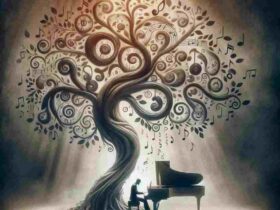
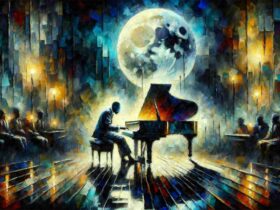
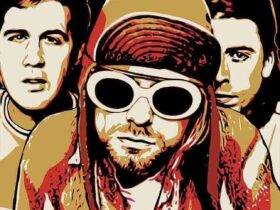

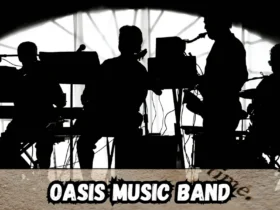

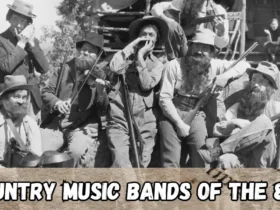

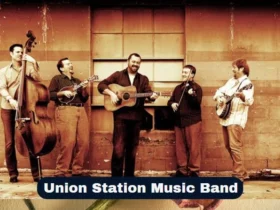
Leave a Reply